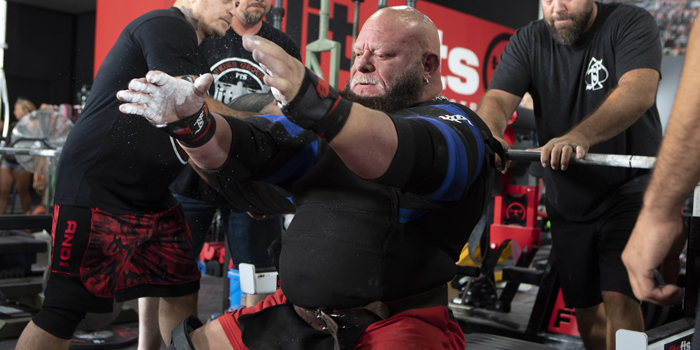
We are all in pursuit of athletic excellence and physical gains. Whether you are an athlete, bodybuilder, powerlifter, or the typical gym rat, one truth reigns supreme: ADAPT OR LOSE.
The world of training methodologies is constantly evolving, with new approaches emerging to challenge the traditional paradigms. One that has lasted the test of time, and coaches have put their own spin on, is nonlinear periodization. It was a game changer when Poliquin/Verkhoshansky first came out with it and it revolutionized the thought process of periodization. But, it also demonized this thought process and went against the parallel universe of linear periodization.
Even to this day, it is still a game changer, but it has evolved through the collaboration and contributions of numerous individuals in the field. Many of these contributors you know of or have even read or listened to them over the years: Tudor Bompa (Periodization Training for Sports), Fred Hatfield (Daily Undulating Periodization), Louie Simmons (Westside Barbell), Cal Dietz (Triphasic Training), and Joe Kenn (Tier System) are to name just a few.
Imagine creating a training program that never allows your muscles and neural pathways to grow complacent, never allows your body to plateau, and never allows progress to stagnate. The essence of nonlinear periodization lies in its ability to create an environment of adaptation, where the body is forced to continually evolve and meet new challenges.
WHY?
Within the realm of nonlinear periodization, there are many ways one can use the commonalities that are in nonlinear training. The commonality amongst nonlinear training is the power of change. Thus creating concepts that embrace the power of frequent variations in intensity, volume, and exercise selection. You can also utilize this concept by programming for specific trait purposes (Strength, Power, Speed and even utilizing Velicoity Based Training (VBT) as well). This rollercoaster of change means that the stimuli consistently makes your body guess, preventing it from settling into a state of comfort or predictability. It is a method that taps into the body's inherent need to ADAPT and GROW STRONGER in response to ever-changing demands.
What Is The Catch?
Nonlinear periodization comes with challenges such as a paradigm shift in our thinking, and embracing the constant variations and discomfort that accompany nonlinear training. It demands you to step outside the normal 5x5, 4x3, 5x2, comfort zone and put trust in the process of adaptation. It challenges you to step out of the parallel universe of the common periodization thought process and evolve your methodologies.
Keep reading and I will provide you with evidence and a brief thought process on why you should start to incorporate nonlinear training into your programs.
The only question is….
Will you ADAPT?
Or will you LOSE?
“Strength 101, Just when your body has all the answers, you have to change the questions,” Louie Simmons (Westside Barbell Instagram).
Louie Simmons' quote will make you think, explaining that your client's bodies are the answers to your equations (programs). If you constantly give the same question (stimuli or program) to the body, it will not be the specific answer you are seeking. So, as coaches, why wouldn’t you want to understand more about nonlinear training when your questions stop reacting and you get no answers (results)?
Figure 1:
- Training Method of Sports Athletes Using The Nonlinear System of Moving Human Body Competitive Ability (2)
- It also displays the nonlinear approach of random, dynamic, and binding.
- The figure also shows how chaotic the entire sequence of competition is.
Evidence
- A Comparison of Linear and Daily Undulating Periodized (DUP) Programs with Equated Volume and Intensity for Strength
- “Because DUP makes more frequent changes in training stimuli, it could be speculated that this type of program places greater stress on the neurological components of the neuromuscular system. This increased stress would presumably require future adaptations from this system. It is possible that this added stress elicits greater adaptations of the neuromuscular system and therefore greater gains in strength as compared with LP.” (3)
- “DUP provides the added stress and variations necessary to elicit maximal strength gains by altering the volume and intensity of training on a daily rather than monthly basis.” (3)
- Comparison Between Nonlinear and Linear Periodized Resistance Training
- “The 1RM of the NLP group was significantly higher between baseline and post-training for any group.” (4)
- “In conclusion, both linear periodization and nonlinear periodization are effective, but nonlinear periodization may lead to a greater gain in 1RM and MT over a 12-week training period.” (4).
- Short-Term Performance Effects of High Power, High Force, or Combined Weight Training
- “The results of this study indicate that increases in a variety of performance variables concerned with maximum strength and power are best accomplished using a training program that combines heavy strength training and high power exercises.” (5)
- “Suggest that improvement in a wide variety of performance measures encompassing strength, power, and speed parameters is best accomplished using a combination of heavy weight training and high power movements.” (5)
There are many ways coaches and scientists have organized their training when it comes to utilizing nonlinear or undulating periodization. The question becomes how will you utilize it for your athletes or clients.
Organizing NonLinear Training
Here are some popular ways coaches have organized their training under the nonlinear approach.
Westside Barbell Outline/Process
- Max Effort
- Dynamic/Repetition Effort
- Max Effort
- Dynamic/Repetition Effort
Block Method (Needs Thought Process)
We undulate daily or weekly depending on the athlete. You can think of ours as a block thought process because we focus on traits we are looking to exploit while not ignoring other traits. Now, there are so many different ways you can organize it. But, here is one idea I have used for a decade. It has developed unbelievable results because at the end of the day - our athletes are not powerlifters or bodybuilders. Even with bodybuilders, you can create a program based on nonlinear training, but you have to understand where the weak points are of the athlete and what the strengths are.
3 Day Week
Week 1 Day 1: Strength
Week 1 Day 2: Speed (Speed Strength or Strength Speed)
Week 1 Day 3: Strength
Week 2 Day 1: Speed (Speed Strength or Strength Speed)
Week 2 Day 2: Strength
Week 2 Day 3: Speed (Speed Strength or Strength Speed)
References
1. Westside Barbell Instagram “Strength 101”
2. Chaohu HE, Liaokun YE, Hanoi Jamal Sulaimani, Wenwu HU. Training Method of Sports Athletes Using The Nonlinear System of Moving Human Body Competitive Ability. Fractals, 2022, 30:2240093-1-2240093-11
3. Rhea MR, Ball SD, Phillips WT, Burkett LN. A comparison of linear and daily undulating periodized programs with equated volume and intensity for strength. J Strength Cond Res, 2002; 16: 250-255
4. Simão, Roberto & Spineti, Juliano & de Salles, Belmiro & Matta, Thiago & Oliveira, Liliam & Fleck, Steven & Rhea, Matthew & Strom-Olsen, Helen. (2012). Comparison Between Nonlinear and Linear Periodized Resistance Training. Journal of Strength and Conditioning Research / National Strength & Conditioning Association. 26. 1389-95. 10.1519/JSC.0b013e318231a659.
5. Harris, G.R., Stone, M.H., O’Bryant, H.S., Prolux, C.M., and Johnson, R.L. “Short-Term Performance Effects of High Power, High Force, or Combined Weight-Training Methods.” Journal of Strh and Conditioning Research. 2000;14(1):14-20. Doi:10.1519/00124278-200002000-00003.
Bryce Biel is the Director of Performance for Legacy at Carbon in Franklin, TN, and the Head Coach of the Tiger Fitness Training App. Biel trains youth athletes, collegiate athletes, and professional athletes in person and online. You can contact Bryce via email at Bryce@LegacyatCarbon.com. Social Media (Twitter/Instagram) @BryceBiel. You can find Legacy at Carbon at www.LegacyatCarbon.com.











Great to see that a training concept a lot of us top coaches are using has so much backing and evidence.